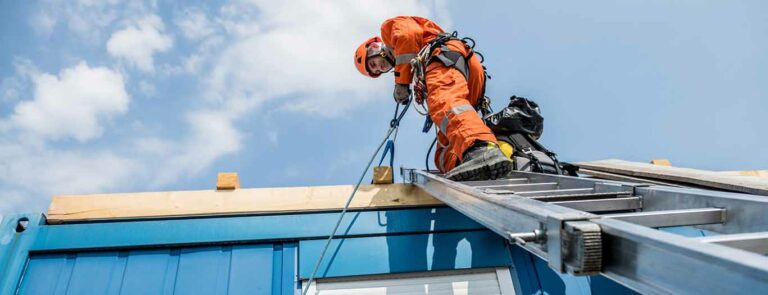Roar Solutions Fundamentals Explained
Roar Solutions Fundamentals Explained
Blog Article
The Ultimate Guide To Roar Solutions
Table of ContentsGetting My Roar Solutions To WorkGetting My Roar Solutions To WorkThe Buzz on Roar Solutions
In order to shield installments from a prospective surge a technique of evaluating and identifying a possibly harmful location is needed. The purpose of this is to ensure the right choice and setup of devices to eventually prevent an explosion and to guarantee safety of life.
(https://pastebin.com/u/roarsolutions)
No devices must be mounted where the surface temperature of the equipment is higher than the ignition temperature of the provided danger. Below are some typical dirt dangerous and their minimal ignition temperature. Coal Dirt 380C 225C Polythene 420C (thaws) Methyl Cellulose 420C 320C Starch 460C 435C Flour 490C 340C Sugar 490C 460C Grain Dirt 510C 300C Phenolic Material 530C > 450C Aluminium 590C > 450C PVC 700C > 450C Residue 810C 570C The chance of the threat existing in a focus high adequate to trigger an ignition will certainly differ from place to place.
In order to identify this risk an installment is separated into locations of threat depending upon the quantity of time the harmful exists. These areas are referred to as Zones. For gases and vapours and dusts and fibres there are 3 areas. Area 0 Area 20 An unsafe ambience is highly likely to be existing and might exist for extended periods of time (> 1000 hours annually) or also continuously Area 1 Area 21 An unsafe atmosphere is feasible however unlikely to be present for lengthy durations of time (> 10 450 C [842 F] A category of T6 means the minimum ignition temperature level is > 85 C [185 F] Harmful area electric equipment maybe designed for usage in greater ambient temperature levels. This would indicated on the score plate e.g. EExe II C T3 Ta + 60C( This means at 60C ambient T3 will not be exceeded) T1 T1, T2, T3, T4, T5, T6 T2 T2, T3, T4, T5, T6 T3 T3, T4, T5, T6 T4 T4, T5, T6 T5 T5, T6 T6 T6 A T Course rating of T1 indicates the maximum surface area temperature level generated by the instrument at 40 C is 450 C. Assuming the associated T Course and Temperature ranking for the equipment are suitable for the area, you can always utilize an instrument with a much more strict Department ranking than required for the location. There isn't a clear solution to this inquiry regrettably. It truly does depend upon the kind of devices and what repairs need to be performed. Tools with particular examination procedures that can't be executed in the field in order to achieve/maintain 3rd party rating. Should return to the factory if it is before the equipment's service. Area Repair Work By Authorised Worker: Complex testing may not be required nonetheless particular treatments might need to be adhered to in order for the devices to maintain its 3rd celebration ranking. Authorized workers must be used to do the job properly Repair work should be a like for like substitute. New element need to be considered as a direct replacement calling for no special screening of the equipment after the repair service is full. Each tool with a dangerous ranking ought to be evaluated separately. These are detailed at a high level below, however for even more in-depth details, please refer directly to the guidelines.
The 4-Minute Rule for Roar Solutions
The tools register is a comprehensive database of tools records that consists of a minimum collection of fields to identify each item's location, technological criteria, Ex category, age, and environmental information. This details is essential for tracking and taking care of the devices successfully within dangerous locations. On the other hand, for routine or RBI sampling assessments, the grade will certainly be a combination of In-depth and Close assessments. The ratio of Comprehensive to Shut assessments will certainly be figured out by the Devices Danger, which is assessed based upon ignition danger (the chance of a source of ignition versus the possibility of a flammable ambience )and the hazardous area category
( Zone 0, 1, or 2). This variant will certainly likewise affect the resourcing needs for job prep work. When Great deals are defined, you can establish tasting strategies based upon the sample size of each Whole lot, which describes the number of arbitrary equipment products to be inspected. To establish the needed sample size, two aspects need to be reviewed: the dimension of the Lot and the category of inspection, which suggests the degree of initiative that ought to be applied( reduced, typical, or raised )to the assessment of the Great deal. By incorporating the group of inspection with the Lot dimension, you can after that establish the suitable rejection requirements for a sample, meaning the permitted variety of defective items found within that example. For more information on this process, please refer to the Energy Institute Standards. The IEC 60079 typical suggests that the maximum period in between assessments must not surpass 3 years. EEHA examinations will additionally be conducted outside of RBI projects as part of arranged upkeep and equipment overhauls or fixings. These assessments can be attributed towards the RBI sample sizes within the affected Lots. EEHA evaluations are conducted to determine faults in electrical equipment. A weighted racking up system is vital, as a single item of tools may have numerous faults, each with differing levels of ignition risk. If the combined score of both examinations is much less than two times the fault rating, the Great deal is considered acceptable. If the Great deal is still considered inappropriate, it should undergo a full assessment or justification, which may set off stricter inspection procedures. Accepted Whole lot: The reasons for any kind of mistakes are identified. If an usual failing mode is found, extra tools may need examination and fixing. Mistakes are categorized by severity( Safety and security, Honesty, Home cleaning ), guaranteeing that urgent concerns are analyzed and resolved promptly to alleviate any type of influence on safety or operations. The EEHA database must track and videotape the lifecycle of mistakes together with the restorative activities taken. Executing a robust Risk-Based Assessment( RBI )approach is crucial for ensuring compliance and safety in handling Electrical Devices in Hazardous Areas( EEHA) (Roar Training Solutions). Automated Mistake Rating and Lifecycle Monitoring: Effortlessly handle mistakes and track their lifecycle to enhance examination accuracy. The intro of this assistance for risk-based evaluation additionally reinforces Inspectivity's position as a best-in-class option for governing compliance, along with for any asset-centric assessment use case. If you are interested in finding out more, we welcome you to request a presentation and discover how our service can change your EEHA administration processes.
The 25-Second Trick For Roar Solutions

In terms of explosive risk, a hazardous location is an atmosphere in which an explosive atmosphere is existing (or may be expected to be present) in amounts that need unique preventative measures for the building, setup and use tools. eeha training. In this write-up we check out the challenges dealt with in the office, the risk control actions, and the needed proficiencies to work safely
These compounds can, in specific conditions, develop eruptive atmospheres and these can have major and unfortunate consequences. Most of us are familiar with the fire triangle remove any one of the three elements and the fire can not occur, but what does this mean in the context of unsafe areas?
In a lot of instances, we can do little regarding the levels of oxygen in the air, but we can have substantial influence on resources of ignition, for instance electric equipment. Dangerous areas are recorded on the harmful area classification drawing and are identified on-site by the triangular "EX-SPOUSE" indicator. Right here, among other essential information, areas are divided right into 3 types relying on the danger, the probability and period that an eruptive atmosphere will certainly exist; Zone 0 or 20 is deemed one of the most unsafe and Zone 2 or 22 is regarded the least.
Report this page